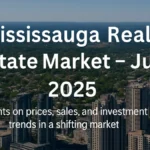Investing in Miami Real Estate for the long term can be a strategic decision, considering various factors:
1. Economic Growth
Miami’s economy has been experiencing a period of sustained growth, driven by several key sectors:
- Tourism: As a major tourist destination, Miami benefits from a steady influx of visitors, which fuels demand for hotels, restaurants, and retail businesses. This, in turn, drives demand for commercial real estate.
- Financial Services: Miami has emerged as a significant financial center, attracting banks, investment firms, and other financial institutions. This growth has created jobs and increased demand for office space and residential properties.
- Technology: The technology sector has been expanding in Miami, with a growing number of startups and tech companies. This sector has contributed to economic growth and increased demand for office space and talent.
- Trade: Miami’s strategic location has made it a hub for international trade, particularly with Latin America. This has boosted the local economy and created demand for commercial real estate, such as warehouses and logistics facilities.
The strong economic growth in Miami has several implications for the real estate market:
- Increased Demand for Housing: As the economy expands and job opportunities increase, more people are attracted to Miami, leading to increased demand for both residential and commercial properties.
- Rising Property Values: The growing demand for real estate can put upward pressure on property values, making it a favorable time for investors.
- New Development Projects: Developers respond to the increased demand by constructing new residential and commercial projects, which can further stimulate economic growth and create job opportunities.
Miami’s economy has been showing signs of strength, with low unemployment rates and a thriving local business environment. A strong economy can drive demand for both residential and commercial real estate [Click Here].
2. Population Growth
Miami’s population has been steadily increasing over the years, driven by several factors:
- Immigration: The city’s diverse culture and favorable climate have attracted a significant number of immigrants from both within and outside the United States.
- Domestic Migration: People from other parts of the country have been drawn to Miami’s vibrant lifestyle, job opportunities, and warmer weather.
- Economic Growth: Miami’s growing economy, particularly in sectors such as tourism, finance, and technology, has created job opportunities and attracted new residents.
Impact of Population Growth on Real Estate
The increasing population in Miami has directly contributed to the demand for housing. As more people move to the city, they need places to live, which drives up demand for both rental properties and homeownership. This increased demand can lead to:
- Rising Property Values: As demand for housing outpaces supply, property values tend to appreciate.
- Increased Rental Income: Higher demand for rental properties can lead to increased rental income for landlords.
- New Development Projects: Developers respond to the growing demand by constructing new residential projects, which can further increase housing supply and potentially impact property values.
Long-Term Appreciation Potential
The long-term appreciation potential of real estate in Miami is closely tied to population growth. As the city’s population continues to increase, the demand for housing is likely to remain strong, supporting property value appreciation.
However, it’s important to note that real estate markets can be influenced by various factors, including economic conditions, interest rates, and supply and demand dynamics. While population growth is a positive indicator for the long-term outlook of the Miami real estate market, investors should still conduct thorough research and consider other factors before making investment decisions.
3. Luxury Market Strength
Miami’s luxury real estate market has consistently demonstrated strength and resilience, attracting discerning investors seeking high-quality properties in prime locations. This segment of the market offers a unique blend of lifestyle, investment potential, and appreciation potential.
Key Drivers of the Luxury Market
- International Demand: Miami’s global appeal and favorable tax environment have attracted a significant number of international buyers seeking luxury properties.
- Lifestyle and Amenities: The city’s world-class beaches, vibrant culture, and exclusive amenities make it a highly desirable destination for those seeking a luxurious lifestyle.
- Property Appreciation: Luxury properties in prime locations have historically shown strong appreciation potential, making them attractive investment options.
Prime Locations for Luxury Investments
- Coral Gables: Known for its Mediterranean architecture, tree-lined streets, and prestigious schools, Coral Gables is a highly sought-after neighborhood for luxury homes.
- Coconut Grove: This historic waterfront neighborhood offers a relaxed atmosphere, beautiful parks, and upscale dining and shopping options.
- Miami Beach: As a world-famous beach destination, Miami Beach boasts stunning oceanfront properties, luxury condos, and a vibrant nightlife scene.
- Downtown Miami: The city’s urban core offers a mix of high-rise condos, luxury penthouses, and upscale amenities.
Investment Considerations
- Higher Entry Costs: Investing in luxury properties typically requires a higher initial investment compared to more affordable options.
- Maintenance and Operating Costs: Luxury properties may incur higher maintenance and operating costs, including property taxes, insurance, and association fees.
- Market Fluctuations: While the luxury market has shown resilience, it is not immune to market fluctuations. Economic downturns or changes in demand can impact property values.
Potential Returns
Despite the higher entry costs and potential risks, investing in Miami’s luxury real estate market can offer significant returns. Luxury properties often appreciate at a faster rate than more affordable options, and they can also generate substantial rental income, especially in high-demand areas.
Investing in Miami Real Estate – The luxury real estate market in Miami, particularly for high-end condos and homes in sought-after areas, has shown robust growth. This segment of the market might offer attractive investment opportunities, especially in prime locations like Coral Gables, Coconut Grove, and Miami Beach [Click Here].
4. Rental Market
Miami’s vibrant tourism industry, coupled with its growing population and economic prosperity, has made it a highly desirable location for both residents and visitors. This strong demand for housing has created a thriving rental market, offering potential investors significant opportunities for long-term income generation.
Understanding Miami’s Rental Market
- High Occupancy Rates: Miami’s popularity as a tourist destination and its growing population have led to consistently high occupancy rates for rental properties. This ensures a steady stream of rental income.
- Diverse Rental Market: Miami offers a diverse range of rental options to cater to various preferences and budgets. From luxury beachfront condos to affordable apartments, investors can find suitable properties to meet the needs of different renters.
- Strong Demand for Short-Term Rentals: Miami’s tourism industry has fueled a strong demand for short-term rentals, such as Airbnb and vacation rentals. Investors can capitalize on this trend by offering properties for short-term rentals, potentially generating higher rental income.
Factors Affecting Rental Income
Several factors can influence rental income:
- Location: Properties located in desirable neighborhoods, near popular attractions, or with easy access to transportation typically command higher rental rates.
- Property Type: The type of property (e.g., apartment, condo, single-family home) can affect rental income. Higher-end properties may command higher rents but may also have higher operating costs.
- Amenities: Properties with desirable amenities, such as swimming pools, gyms, or parking, can attract higher-paying tenants and command higher rental rates.
- Property Condition: Well-maintained properties in good condition are more likely to attract quality tenants and command higher rents.
Investing in Miami’s Rental Market
- Market Research: Conduct thorough research to identify the most promising areas for rental investments based on factors such as demand, rental rates, and property values.
- Property Management: Consider hiring a professional property manager to handle day-to-day operations, tenant screening, and maintenance.
- Financial Planning: Develop a financial plan that takes into account potential rental income, expenses, and return on investment.
- Legal Considerations: Consult with legal professionals to understand the legal aspects of owning rental property in Miami, including landlord-tenant laws and tax implications.
5. Market Volatility and Interest Rates
Understanding Market Fluctuations
The real estate market is inherently volatile, subject to fluctuations influenced by a variety of factors, including economic conditions, interest rates, and geopolitical events. These fluctuations can impact property values, rental income, and overall investment returns.
Interest Rates and Their Impact
Interest rates play a significant role in shaping the real estate market. When interest rates are low, it becomes more affordable for individuals to obtain mortgages, which can lead to increased demand for properties and rising prices. Conversely, when interest rates are high, the cost of borrowing increases, which can deter potential buyers and put downward pressure on prices.
Predictions for 2024
While there has been speculation about interest rate decreases in 2024, the actual trajectory remains uncertain. Economic indicators, central bank policies, and global events will continue to influence interest rate decisions.
- Potential for Lower Rates: Some experts predict that central banks may lower interest rates to stimulate economic growth and combat inflation. If interest rates decrease, it could make it more affordable for individuals to purchase homes, leading to increased demand and potentially higher property prices.
- The Risk of Persistent High Rates: However, there is also a possibility that interest rates may remain high or even increase further. This could make it more challenging for buyers to afford properties, potentially leading to a slowdown in the market.
Navigating Market Volatility
To navigate market volatility and make informed investment decisions, consider the following strategies:
- Long-Term Perspective: Maintain a long-term perspective and avoid making impulsive decisions based on short-term market fluctuations.
- Diversification: Spread your investments across different property types and locations to reduce your exposure to risk.
- Risk Assessment: Carefully assess the potential risks and rewards associated with your investments.
- Professional Advice: Consult with real estate experts or financial advisors who can provide insights and guidance.
The real estate market can be subject to fluctuations, influenced by factors like interest rates and economic conditions. While some experts predict a decrease in interest rates in 2024, which could spur the market, others foresee them remaining high. Keeping an eye on these factors is important for long-term planning [Click Here].
6. Diversification and Risk Management
The Importance of Diversification
Diversification is a fundamental principle of investing, and it applies equally to real estate. By spreading your investments across various property types and locations, you can reduce your exposure to risk. This can help protect your portfolio from the potential negative impacts of market fluctuations, economic downturns, or unforeseen events.
Types of Property Diversification
- Residential vs. Commercial: Investing in both residential and commercial properties can help balance your portfolio. Residential properties typically offer stable rental income and long-term appreciation, while commercial properties may provide higher returns but can be more susceptible to economic cycles.
- Luxury vs. Affordable: Diversifying between luxury and affordable properties can help you capture different market segments. Luxury properties may offer higher rental income and potential for appreciation, but they can also be more vulnerable to economic downturns.
- New Construction vs. Existing Homes: Investing in both new construction and existing homes can provide different risk-reward profiles. New construction properties may offer modern features and amenities but can be more susceptible to market fluctuations. Existing homes may have established rental histories and lower upfront costs.
Geographic Diversification
Investing in different areas within Miami can help you manage risk by reducing your exposure to localized factors. For example, if one neighborhood experiences a decline in demand, properties in other areas may remain unaffected.
- Downtown vs. Suburban: Diversifying between downtown and suburban properties can help you capture different market segments. Downtown properties may offer higher rental income and potential for appreciation, but they can also be more susceptible to economic downturns. Suburban properties may offer lower prices and a more stable rental market.
- Coastal vs. Inland: Investing in both coastal and inland properties can help you manage risk related to natural disasters and coastal erosion. Coastal properties may offer higher rental income and appreciation potential, but they can be more vulnerable to hurricanes and rising sea levels.
Risk Management Strategies
In addition to diversification, other risk management strategies can be considered:
- Professional Management: Hiring a professional property manager can help you manage your investments efficiently and reduce the risks associated with tenant turnover, maintenance issues, and legal matters.
- Insurance: Adequate insurance coverage can protect your investments against unforeseen events such as property damage, natural disasters, and liability claims.
- Financial Reserves: Building a financial reserve can help you weather economic downturns or unexpected expenses.
7. Real Estate Cycles
The real estate market, like any other economic sector, is cyclical. Understanding these cycles can help investors make informed decisions and potentially capitalize on opportunities or mitigate risks.
Phases of the Real Estate Cycle
- Expansion: This phase is characterized by increasing demand, rising prices, and economic growth. Investors may see opportunities to purchase properties at relatively lower prices before prices appreciate significantly.
- Peak: At the peak of the cycle, prices reach their highest point, and demand may begin to slow down. Investors should be cautious about overpaying for properties and consider potential risks of a market downturn.
- Recession: A recession is characterized by declining prices, reduced demand, and economic contraction. While this phase can be challenging for investors, it may present opportunities to purchase properties at discounted prices.
- Recovery: The recovery phase is marked by a gradual increase in prices and demand as the economy begins to rebound. Investors may see opportunities to purchase properties at a relatively low point in the cycle, anticipating future price appreciation.
Miami’s Market Cycles
Miami’s real estate market has historically demonstrated resilience and cyclical patterns. Factors such as economic conditions, tourism, and international investment have influenced its cycles.
- Economic Factors: Economic downturns can impact the Miami real estate market, leading to decreased demand and lower prices. However, Miami’s diverse economy and strong tourism industry have helped it recover from economic shocks.
- Tourism: The tourism industry plays a significant role in driving demand for real estate in Miami. Fluctuations in tourism can affect property prices and rental income.
- International Investment: Miami’s international appeal has attracted significant foreign investment in real estate. Global economic conditions and political factors can influence the flow of foreign capital into the city.
Identifying Market Trends
To understand the current phase of the real estate cycle in Miami and identify potential trends, investors can consider the following factors:
- Price Trends: Analyze historical price data to identify upward or downward trends.
- Demand Indicators: Monitor indicators of demand, such as sales volume, rental occupancy rates, and building permits.
- Economic Indicators: Pay attention to economic indicators, such as GDP growth, employment rates, and interest rates.
- Market Sentiment: Gauge market sentiment by following news reports, industry analysis, and investor opinions.
Understanding real estate cycles can help investors develop effective strategies:
- Diversification: Consider diversifying investments across different property types, locations, and rental income streams to mitigate risk.
- Timing: Aim to buy properties during the expansion or early recovery phases when prices may be lower.
- Long-Term Perspective: Maintain a long-term perspective and avoid making impulsive decisions based on short-term market fluctuations.
- Professional Advice: Consult with real estate experts or financial advisors who can provide insights and guidance.
By understanding the real estate cycle and its underlying factors, investors can make informed decisions and potentially capitalize on opportunities in Miami’s dynamic market.
8. Regulatory Environment
Understanding Local Regulations
Miami’s real estate market, like any other, is subject to a complex web of regulations that can significantly impact investment decisions. Staying informed about local laws, zoning ordinances, and potential changes is crucial for long-term planning.
Zoning Laws and Restrictions
Zoning laws dictate how land can be used within specific areas. Understanding these regulations is essential for determining the potential for development, redevelopment, or conversion of properties. Zoning restrictions may limit the type of building allowed, height restrictions, density requirements, and other factors.
Building Codes and Permits
Adhering to building codes and obtaining necessary permits is a critical step in any real estate project. These regulations ensure safety, structural integrity, and compliance with local standards. Failure to comply with building codes can result in fines, delays, or even legal action.
Environmental Regulations
Miami’s coastal location and unique ecosystems necessitate strict environmental regulations. Investors must be aware of regulations related to wetlands, endangered species, and coastal erosion. Failure to comply with these regulations can lead to significant legal and financial consequences.
Property Taxes and Assessments
Property taxes are a significant expense for real estate owners. Understanding the tax rates, assessment methods, and potential exemptions is essential for budgeting and financial planning. Property taxes can vary based on factors such as property value, location, and land use.
Rent Control and Tenant Protections
In some areas of Miami, rent control laws may limit the amount by which landlords can increase rents. Additionally, tenant protection laws may provide certain rights to tenants, such as the right to dispute rent increases or evictions.
Government Incentives and Programs
Governments may offer incentives or programs to encourage investment in specific areas or types of real estate. These incentives can include tax breaks, grants, or low-interest loans. Staying informed about available government programs can provide significant benefits to investors.
Potential Changes in Regulations
It’s important to note that regulations can change over time. Political shifts, economic conditions, and societal trends can influence the development of new laws and policies. Staying updated on regulatory changes is essential for making informed investment decisions.
Consulting with Experts
Given the complexity of real estate regulations, it’s advisable to consult with experts who are familiar with the Miami market. Real estate attorneys, tax advisors, and financial planners can provide valuable guidance and help navigate the regulatory landscape.
Find your dream home near Miami today! Click here to explore pre-construction opportunities and exclusive listings on PreConstruction.info.
Discover the latest trends in luxury Miami condos at Brickell Sold, and explore professional real estate photography services in Toronto with Click Media Pro. For comprehensive updates on Canadian real estate developments, visit Wedu and the Wedu Blog. Stay informed about the pre-construction market by visiting Preconstruction Info.






